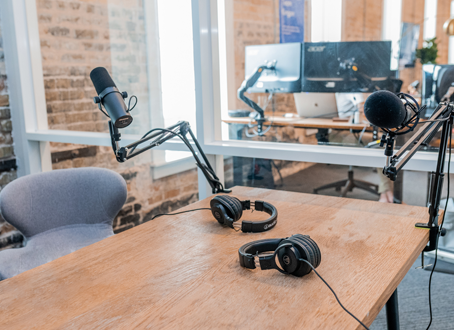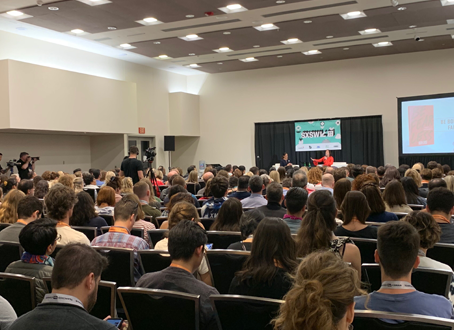At the Case Foundation, we are busy planning for our 20th anniversary. It turns out that anniversary isn’t until 2017 – so you might say we’re planning way ahead. But, it’s not what you might think – no thought given to parties, self-congratulations or any of the normal festivities that can come with an important anniversary. Instead, we’re trying to take a long, hard look at the work we’ve undertaken and for the first time, try to capture a longitudinal look at the impact we think has been achieved. Between now and 2017, we are committed to rolling out a series of case studies – we call them reflections – that will take a look back at significant moments in the Case Foundation’s history – from our earliest days in creating a major alliance around the digital divide, to transformational programs like the Make It Your Own Awards, inspired by our belief in putting Citizens at the Center, to our learnings and failures in international development through our work with PlayPumps. Beyond assessing long-term outcomes, these reflections will also play a crucial role in helping us define the impact we want to have in the next 20 years.
In addition to the formal case studies, we also plan to publish informal stories of lessons learned in our strategy and approach to philanthropy – including our transition from independently writing large checks (often to big established institutions) to instead being catalyst investors focused on collaborative, entrepreneurial initiatives. These stories and case studies will focus on what has worked – and perhaps more importantly, what has not.
As we lead up to the rollout of our reflections, I’ve been thinking a lot about a pivotal moment for me – one that has defined the approach of the Case Foundation over the past decade. A few years after we started the foundation I was in North Carolina touring a technical school that was looking to increase its capacity. The head of the school shared a story of a struggle they were having in raising funds – they had been the beneficiary of a significant gift from a single donor. While they were of course extremely grateful for the generosity of the donor, with one donation so far front and center, it was difficult to get others to follow behind and work as a true collaboration. The school said the larger community was reluctant to join in support because this one gift “crowded out” others and left potential donors asking, “what difference can my (much smaller) gift make?”
While we’d long been believers in the power of democratization, this was a moment that helped to solidify our commitment to “democratizing philanthropy” and was when we began realizing philanthropy should never be limited just to wealthy people writing checks. Don’t get me wrong, we love it when wealthy people write big checks to support causes they care about, and we intend to make large donations a continuing part of our philanthropy, but we also celebrate giving at all levels – and support that can come from all sectors. It takes a village to make big change happen.
It was a lesson we took with us when we became the founding supporters of CityYear in DC many years ago, representing a disproportionate level of support for their local presence in the earliest days. Because we believed it was absolutely critical that City Year create a “big tent” of supporters that would ensure the organization’s long-term stability, our memorandum of understanding made very clear that our continuing support was contingent on the organization’s ability to grow their base of support from others. Today there is a robust and vibrant base of supporters for City Year here in DC and that “big tent” is helping to better inform their work and extend their network and resources as they take forward their mission. We’re still locked in arms with them in their work, but they are strengthened and made more sustainable through this broader base of support.
To date, we’ve given away more than $200 million – about half through the Case Foundation and the other half personally. We’re proud of that, but even prouder of the networks, expertise and broad based support we have also brought to bear to maximize the impact of our giving. Our grantees tell us that these other forms of support create value well beyond the dollars we’ve contributed.
We have learned to look at our philanthropic efforts similar to the way we’d look at any other investment – what’s our overall return, and how are we leveraging all of the tools at our disposal to make progress toward the change we want to see in the world? Put simply, we’ve shifted from looking just at inputs (checks we write and efforts expended) to instead looking at outcomes (the actual impact our involvement has). And as catalyst investors, those outcomes include consideration of how leveraged our spending is. In other words, for every dollar we spend, how much additional capital did we unleash from others through collaborations we help build?
By linking arms with others, and by serving as a catalyst for new approaches, we’ve been able to generate impact that is far greater than it would be if we were instead a more passive donor. Indeed, we estimate that our giving has helped to unleash billions of charitable and private sector capital from partners to the causes and issues we back. Here are just a few examples of how we look at this leverage:
- With $250K in grants, and by working with great companies like Deloitte, HP, Capital One and others, our support of A Billion + Change has led to more than $5B in pledges to pro-bono service for nonprofits from over 5,000 companies.
- Through $900K in grants, along with partnerships with Network for Good, Global Giving, Causes and PARADE on two America’s Giving Challenges our support led to more than $4M in donations for worthwhile causes and helped to inspire the creation of similar initiatives like the $20M Pepsi Refresh Challenge, the $20M Chase Community Giving campaign, and dozens of local and national giving days that have unleashed a collective tens of millions of dollars for nonprofit organizations.
- Our investment of $1M in grants and in-kind support for the Startup America Partnership led to nearly $500M of in-kind commitments to support startups from companies like American Airlines, American Express, Microsoft, Google, and others.
- Our work in helping to catalyze impact investing contributed to unleashing $2B in commitments (announced at the White House this past June) to invest to deliver a financial and social return.
- Our support of online giving platforms like Mission Fish and Network for Good with grants and investments of less than $2M have helped to catalyze more than $1.5B in giving to worthy nonprofits.
We’ll be the first to admit that in the first 17 years of our journey in philanthropy, we certainly haven’t gotten it all right – which is a big part of why we’re doing our in-depth reflections work. But we’ve long ascribed to the mantra that “If you want to go fast, go alone; if you want to go far, go together” – and believe that building a tapestry of alliances and partnerships, and serving as a catalyst for new ideas and concepts can create far greater impact than any check we could ever write. We are enormously grateful to our partners from every sector who have come alongside and helped to drive change at a scale and in ways we could have never have achieved alone.
It’s an exciting time for those of us who are mission focused. We continue to listen and learn as we try to drive impact. We look forward to sharing our stories with you in the coming months.





